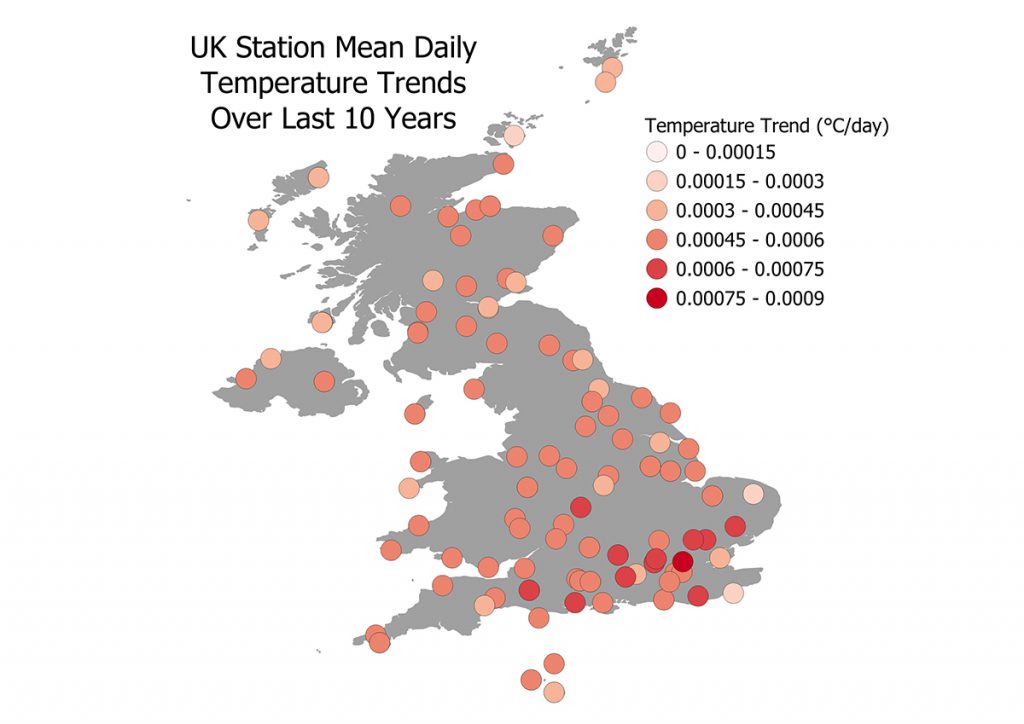MetSwift’s founder and CEO James Banasik explains why weather-tech solutions and climate expertise will enable the construction industry to mitigate against seemingly unpredictable, severe weather
In December’s BIM Today, we explained how MetSwift’s downtime factoring can improve construction processes. Here, we explain why this is increasingly essential in a changing climate.
Overlooked issues
As we enter 2020, the construction industry is increasingly under pressure to adapt and mitigate against climate-related weather risks, which appear unpredictable.
Much attention is being given to mitigation via building and material design – following the UK government’s initiative to decarbonise the UK economy by 2050. However, less attention is being given to the pressing need when project planning, to understand and account for potential weather-related downtime (a costly aspect of all construction projects). This need is even more acute as changes in established climate trends continue to occur on a local level: Impacting all projects.
A more extreme climate means increased weather-related claims, delays, damage and downtime in building projects.
Demand is there for the tools that will enable construction companies to build resilience to localised climate changes and ensure safe, effective and affordable build projects – whatever the weather.
Pressing need
In the US, the estimated cost of weather-related delays approaches $4bn per annum. As Raken co-founder Sergey Sundokvsky noted in a recent interview: “Climate change is having effects on worker safety, weather delays, construction materials design and insurance costs in the construction industry… Excessively hot or cold weather conditions and exposure to these conditions are resulting in increased worker compensation claims and subsequent project delays.”
“Additional instances related to climate change may include uncharacteristically strong wind conditions that result in injury due to falling or being hit by construction debris… Excessively wet and dry conditions, on many occasions, make it impossible to begin foundation work… In extreme cases, consecutive weather delays of 30 days or longer may result in missing acceptable construction season entirely, which could require shifting completion into the following years.”
This is the case in the UK also, wherein 2018 the Beast from the East cost UK construction £2bn.
Who can help the construction sector in smart and competitive project planning against future weather risk?
Exact downtime accuracy
The MetSwift platform places several analytic models at the user’s fingertips.
Via the platform, a date-range, site location and weather-risk type (rainfall, wind, temperature and perils) are selected. Users enter moderate and severe weather thresholds that would lead to disruption. For example, a statistical model will instantly inform the user that a construction project located at The Shard, 32 London Bridge St, London, SE1 9SG, will see 3.0 days of downtime at 5mm rainfall and 1.5 days at 10mm. All dates, locations and thresholds can be incrementally adjusted.
In response, the number of likely downtime days – based on analysis – is instantly calculated and presented. This robustly informs planning based on a range of project concerns that relate to severe weather: when to deploy specialised equipment, repurpose work, respond to overrun, when prior work or materials would be adversely affected by severe weather, and reduction of days when construction is feasible.
Climate and construction risk reality
The need for this instant analysis is all the more important as it is no longer plausible to say climate change will have a uniform impact – simply increasing severe weather events. Because the meteorological patterns and processes that cause impactful weather events are complicated – as the climate changes, the work needed to calculate and forecast for the timing, intensity and duration of severe weather will also become more in-depth and challenging.
Intelligent weather models, developed by climate experts analysing cleansed data, are now essential in downtime calculation. Any other means of predicting weather events will become mere estimation.
All aspects of downtime will be affected, including seasonality, duration and location. There are many layers to complex weather patterning in a changing climate. Understanding how these will develop, ahead of time, – and their effect on the weather at a precise date and location – is imperative.
Active answers
MetSwift was named as a “potential gamechanger for analysing weather risks across complex supply chains” by the judging panel of the Insurance Times Tech & Innovation Awards 2019. We have developed a platform where statistical and machine learning models instantly assess future downtime duration.
Unlike other weather prediction software, MetSwift’s models analyse localised datasets that incorporate past and current microclimate data. These have been developed by data scientists, accredited climatologists, world-class meteorologists and business specialists in response to industry needs. These analytics are monitored continually and learn from their own machine learning.
In an increasingly risky climate – requiring competitive and more frequent decision-making – specialist and instant weather analysis informs construction bidding, efficacy and safety. Corrective actions must be taken so that costly delays and litigation are avoided, project management is streamlined, and worker safety is ensured.
With the knowledge that it is no longer whether, but when and to what extent, entire projects could be disrupted, delayed and even cancelled: the need is more than to mitigate against climate risk, but to act to ensure project survival.
Metswift
Tel: +44 (0)207 846 3277
+44 (0)7557 782317
Please note: this is a commercial profile.















